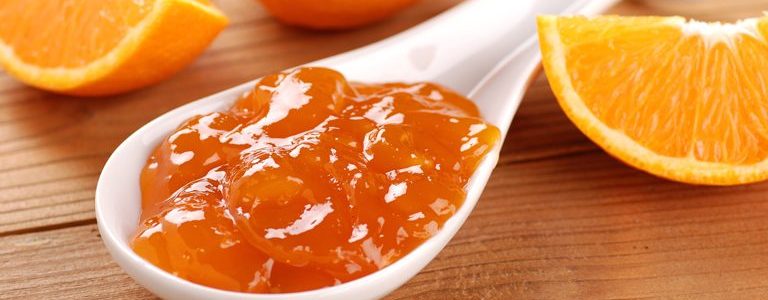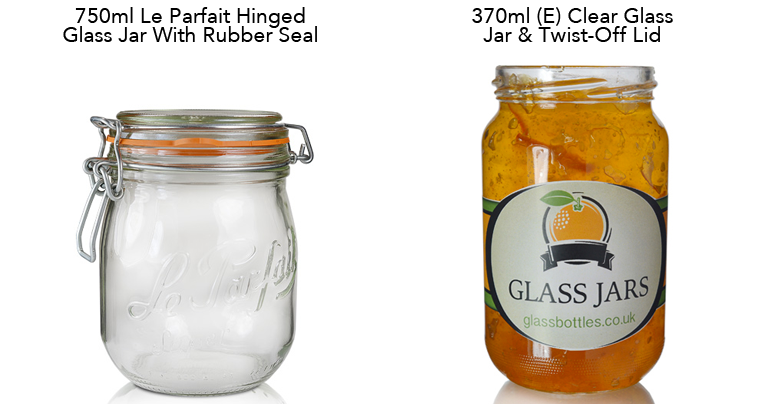
We don’t have specific names for strawberry jam, plum jam or raspberry jam, so why is orange jam called marmalade? It may be a question that you’ve never considered before… In fact, the term ‘marmalade’ doesn’t really have a precise definition and you can play fast and loose with it when describing your preserves. Generally when we refer to marmalade, we are describing the orange preserve made using both the juice and peel. However, you can actually use it to describe any preserve made using the juice and peel of any citrus fruit boiled with sugar and water.
Why Is Orange Jam Called Marmalade?
There are actually a couple of explanations for the term ‘marmalade’, but one theory sounds more plausible than the other. A lot of our modern English words has evolved over centuries of influence from Latin and other European languages, namely French and German. In the Old French language, an orange was referred to as a ‘marmalatice’. In Portuguese, ‘marmelada’ is the name for a fruit preserve made using quinces (a fruit that is similar to a pear). A combination of these words seems to be where our word ‘marmalade’ comes from.
The more outlandish origin story comes from Mary Queen Of Scots. Legend has it that she was sailing from Scotland to France and became seasick. The only thing that would soothe her stomach was orange jam. The French crew members wre heard saying ‘Mary est malade’ to each other (Mary is sick). The sailors were saying this phrase so often, it is believed that Mary Queen Of Scots thought that was what orange jam was called!
Marmalade Recipes
Seville Oranges are the best type of oranges to use to make marmalade, as they produce a bitter yet sweet taste. The Seville Orange season is short, running from the end of December to mid-February so you’d better stock up soon! You can even freeze these oranges so they can be enjoyed all year around or for use in recipes. If you have unwaxed Seville Oranges, make sure that you do not leave them in a fruit bowl for more than a week. They will become tough and unusable due to a loss of moisture if you do!
Classic Seville Orange Marmalade Recipe
This recipe only requires 3 basic ingredients and is the classic marmalade made famous by a certain bear from Peru. It’s absolutely perfect for slathering onto hot, buttery toast…
Ingredients needed: seville oranges (peel and juice), lemons (juice only) and granulated sugar.
Get the full recipe at BBC Good Food.
Orange & Whisky Marmalade Recipe
Prefer your preserves to have more of a kick? This whisky marmalade is the spread for you! As well as being great to enjoy at home, it would also make a fantastic gift for friends and family.
Ingredients needed: seville oranges (peel and juice), lemons (juice only), golden granulated sugar, light muscovado sugar, scotch whisky and unsalted butter.
Get the full recipe at Baking Mad.
Grapefruit Marmalade Recipe
This take on marmalade is simply the same as the classic marmalade recipe, but replaces the oranges with grapefruit. The end result is a more bitter, tangy preserve that pairs delightfully well with sourdough toast.
Ingredients needed: grapefruit (peel and juice), lemons (juice only) and granulated sugar.
Find the full recipe at Le Parfait.
Glass Marmalade Jars

Le Parfait Jars are ideal for storing your bulk batches of marmalade, thanks to their distinctive orange airtight rubber seals and vintage style. They come in 6 sizes: 500ml, 750ml, 1L, 1.5L, 2L and 3L. However if you’re looking for slightly cheaper glass jars, we also have a massive selection of these. This includes the 370ml Clear Glass Jar shown above, which is only 36p per unit and comes with a choice of 10 different lid designs! Make sure to browse through our whole selection of budget jars, jam jars, preserve jars and pickle jars in order to find the perfect jar for your marmalade.
